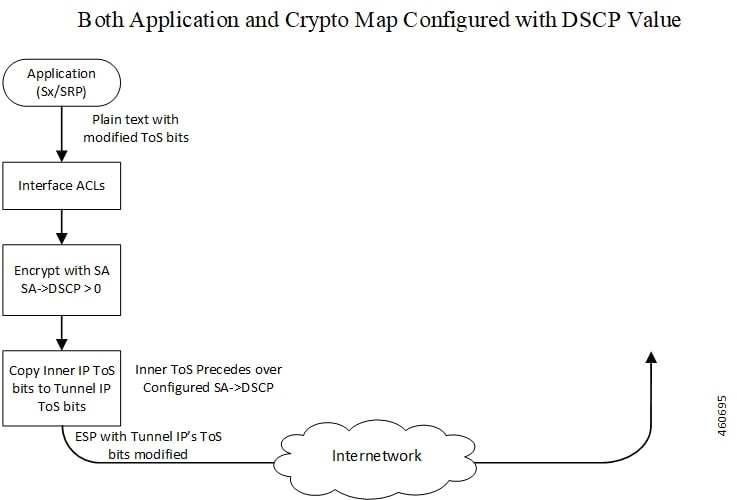|
Internet Key
|
IKEv2 Encryption
|
DES-CBC, 3DES-CBC, AES-CBC-128, AES-CBC-256
|
|
|
Exchange version 2
|
IKEv2 Pseudo Random Function
|
PRF-HMAC-SHA1, PRF-HMAC-MD5, AES-XCBC-PRF-128
|
PRF-HMAC-SHA1, PRF-HMAC-MD5, AES-XCBC-PRF-128
|
|
IKEv2 Integrity
|
HMAC-SHA1-96, HMAC-SHA2-256-128, HMAC-SHA2-384-192.
HMAC-SHA2-512-256, HMAC-MD5-96, AES-XCBC-96
|
HMAC-SHA1-96, HMAC-SHA2-256-128, HMAC-SHA2-384-192.
HMAC-SHA2-512-256, HMAC-MD5-96, AES-XCBC-96
|
|
IKEv2 Diffie-Hellman Group
|
Group 1 (768-bit), Group 2 (1024-bit), Group 5 (1536-bit), Group
14 (2048-bit)
|
Group 1 (768-bit), Group 2 (1024-bit), Group 5 (1536-bit), Group
14 (2048-bit)
|
|
IP Security
|
IPSec Encapsulating Security Payload Encryption
|
NULL, DES-CBC, 3DES-CBC, AES-CBC-128, AES-CBC-256,
AES-128-GCM-128, AES-128-GCM-64, AES-128-GCM-96,
AES-256-GCM-128, AES-256-GCM-64, AES-256-GCM-96
|
NULL, DES-CBC, 3DES-CBC, AES-CBC-192, AES-CBC-128, AES-CBC-256,
AES-128-GCM-128, AES-128-GCM-64, AES-128-GCM-96, AES-192-GCM,
AES-256-GCM-128, AES-256-GCM-64, AES-256-GCM-96
|
|
Extended Sequence Number
|
Value of 0 or off is supported (ESN itself is not supported)
|
Value of 0 or off is supported (ESN itself is not supported)
|
|
IPSec Integrity
|
NULL, HMAC-SHA1-96, HMAC-MD5-96, AES-XCBC-96, HMAC-SHA2-256-128,
HMAC-SHA2-384-192, HMAC-SHA2-512-256
| Important
|
HMAC-SHA2-384-192 and HMAC-SHA2-512-256 are not supported on
VPC-DI and VPC-SI platforms if the hardware doesn't have
crypto hardware.
|
|
NULL, HMAC-SHA1-96, HMAC-MD5-96, HMAC-SHA2-256-128,
HMAC-SHA2-384-192, HMAC-SHA2-512-256
| Important
|
HMAC-SHA2-384-192 and HMAC-SHA2-512-256 are not supported on
VPC-DI and VPC-SI platforms if the hardware doesn't have
crypto hardware.
|
|




 Feedback
Feedback